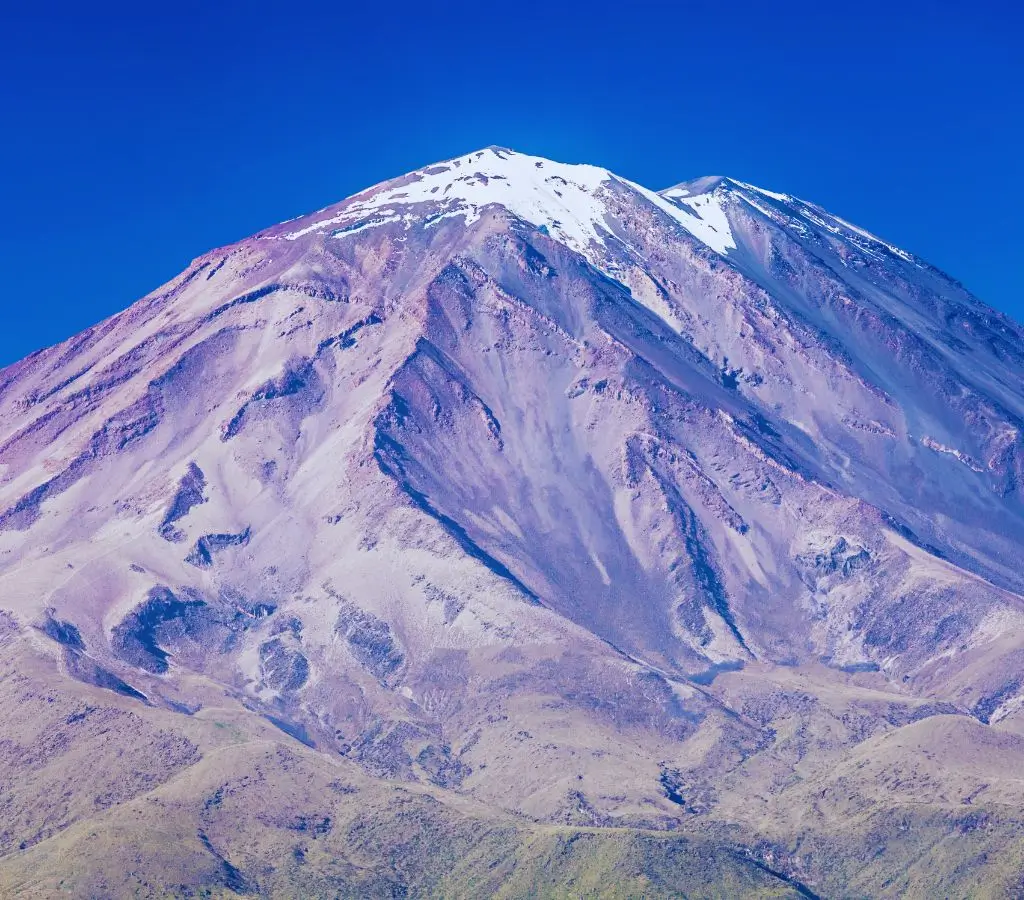Arequipa, better known as the White City, is surrounded by three main volcanoes that captivate us with their immense size at first sight. One of them is the Misti Volcano, which has stood imposing since Incan times when they were known as "Apu," signifying a protective divinity of great importance in the Andean snow-capped peaks.
Initially called Machu Putina (old volcano), Misti was located 40 km away from another volcano named Huayna Putina (young volcano). However, due to several eruption events, its name was changed. Later, it was named Misti, meaning "white race man," drawing attention with its symmetrical conical shape.
Next, I will provide information on how to reach Misti, its description and features, altitude, climate, history, and also discuss the experience of traveling with a tourism agency.
The Misti Volcano is situated in southern Peru, in the city of Arequipa, with an altitude of 5,822 meters, forming part of the Salinas and Aguada Blanca National Reserve.

To explore the Misti Volcano, one must depart from Arequipa, either independently or with a tour. It is highly recommended to travel with a travel agency, as they provide a specialized guide for a more comfortable trek.
There are two routes to reach the Misti Volcano:
Route 1: Starting from Chiguata, our first stop will be at the base of Misti, where we will spend the night in a camp. The next day, we continue the journey to reach the summit of the volcano.
Route 2: Perhaps the longest route, starting from the Aguada Blanca Reserve, initially by car, followed by a hiking expedition. Along the way, we may encounter vicuñas, llamas, and other endemic animals.
Misti is a stratovolcano, meaning it has a symmetrical conical shape with a snow and ice-covered summit, giving it a formidable appearance. Over time, it has become one of the most well-known volcanoes in the region, playing a significant role in the history and culture of the area.

The Misti volcano has an elevation of approximately 5,822 meters above sea level, making it one of the highest peaks in the region.
Given its altitude, the climate on the Misti volcano is extremely cold. However, during the day, it can be warm, and at night, it becomes chilly. During the rainy season, it feels even colder due to being a rainy period.
The Misti volcano dates back approximately 112,000 years. It has undergone at least 12 eruptions in the last 50,000 years, with the last eruptive activity recorded in the 15th century, during the time of the Inca Pachacútec.
Years later, the eruption in 2000 was particularly impactful. It was considered one of the most significant in southern Peru because part of the lava expelled during this eruption deposited in the southwest sector of the volcano, affecting the population of the city of Arequipa.
To this day, the volcano has shown no activity, but local residents are always vigilant, anticipating the possibility of its eruption.
Before embarking on your journey, Illapa Andean Cultures provides some recommendations to consider, such as wearing shoes with rubber soles; bringing a sleeping bag, tents, lightweight and warm clothing, sunglasses, flashlights with extra batteries, a backpack for snacks, or any additional items, and carrying water, preferably in a canteen. Don't forget sunscreen.
Once we are familiar with the recommendations, transportation will pick us up and take us to a specific point from where we will start our hike. On the first day, we will camp at the base of the volcano, and the next day, we will need to wake up early and continue until we reach the summit of Misti. Throughout the journey, we will be guided by an experienced guide.


